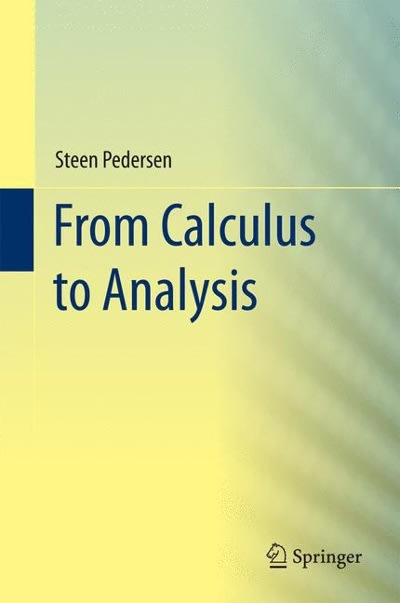Question
A consumer watch group had been tipped off that a certain service station uses gasoline pumps that short the customer. Assuming that the volume a
A consumer watch group had been tipped off that a certain service station uses gasoline pumps that short the customer. Assuming that the volume a pump dispenses for the price of one gallon is approximately normal with a mean of 1 gallon, the consumer watch group decided to perform hypothesis test a 0.10 significance level. A random sample of 10 gallons pumped at this service station yielded an average volume of 0.98 gallons with a sample standard deviation of 0.08 gallons. Perform the appropriate hypothesis test.
Question 1 (1 point
Determine the appropriate null and alternative hypotheses.
Question 1 options:
| |||
| |||
|
Question 2 (1 point)
Determine the critical value(s) for the test. (these determine your rejection region)
Question 2 options:
| |||
| |||
| |||
|
Question 3 (1 point)
Determine the test statistic.
Question 3 options:
| |||
| |||
| |||
|
Question 4 (1 point)
What is the conclusion of your test?
Question 4 options:
| |||
|
Question 5 (1 point)
Interpret the conclusion to your hypothesis test.
Question 5 options:
| Answer on paper. |
Pertains to Questions (6 - 12):
The bargain brand, 1000 flush, advertises a tablet that when placed in the holding tank of a toilet will keep it clean for 1000 flushes. The bargain brand seems to be a good deal but past experience leads you to believe that the tablet doesn't last for the advertised 1000 flushes. Assuming that the lifetime for an individual tablet is normally distributed and a random sample of 16 tablets results in an average lifetime of 980 flushes with a sample standard deviation of 27 flushes, perform the appropriate hypothesis test at a 0.01 significance level in order to determine if the tablet lasts less than the advertised 1000 flushes.
Question 6 (1 point)
Determine the appropriate null and alternative hypotheses.
Question 6 options:
| |||
| |||
|
Question 7 (1 point)
What is the conclusion of your test?
Question 7 options:
| |||
|
Question 8 (1 point)
Approximate the p-value.
(scan across the appropriate t-table row)
Question 8 options:
| |||
| |||
| |||
|
Question 9 (1 point)
Interpret the conclusion to your hypothesis test.
Question 9 options:
| Answer on paper. |
Question 10 (1 point)
Interpret the meaning of your p-value.
Question 10 options:
| Answer on paper. |
Question 11 (1 point)
If an error was made, what type of error would it be?
Question 11 options:
| |||
|
Question 12 (1 point)
Interpret a Type I error in the context of this problem.
Question 12 options:
| Answer on paper. |
Pertains to Questions (13 - 17):
A farmer looking to sell his tree farm claims the average height of his cherry trees is 23 ft. A prospective buyer was about to present an offer but first wanted to test the farmer's claim at a 0.10 significance level. A sample of 49 trees yielded an average height of 21 ft with a standard deviation of 4 ft. Perform the appropriate hypothesis test (two-tailed) and approximate the p-value.
Question 13 (1 point)
Determine the critical value(s) for the test. (set up a two-tailed test)
Question 13 options:
| |||
| |||
| |||
|
Question 14 (1 point)
Determine the test statistic.
Question 14 options:
| |||
| |||
| |||
|
Question 15 (1 point)
What is the conclusion of your test?
Question 15 options:
| |||
|
Question 16 (1 point
Approximate the p-value.
Question 16 options:
| |||
| |||
| |||
|
Question 17 (1 point)
Interpret the conclusion to your hypothesis test.
Question 17 options:
| Answer on paper. |
Step by Step Solution
There are 3 Steps involved in it
Step: 1

Get Instant Access to Expert-Tailored Solutions
See step-by-step solutions with expert insights and AI powered tools for academic success
Step: 2

Step: 3

Ace Your Homework with AI
Get the answers you need in no time with our AI-driven, step-by-step assistance
Get Started


